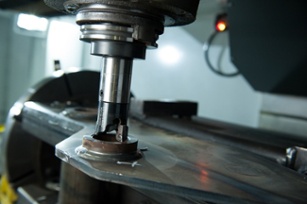
5 Signs A Metal Manufacturer Is Right For Your OEM: Part 3
November 6, 2015
 When you work with the ideal fabrication partner for your OEM business, it’s not difficult to identify the benefits. You should be saving on manufacturing costs, receiving high-quality parts, getting shipments on time and increasing overall efficiency. However, it’s not always easy to tell for certain when you’re partnered with the wrong partner.
When you work with the ideal fabrication partner for your OEM business, it’s not difficult to identify the benefits. You should be saving on manufacturing costs, receiving high-quality parts, getting shipments on time and increasing overall efficiency. However, it’s not always easy to tell for certain when you’re partnered with the wrong partner.
Where is the line between occasional frustrations and recurring, costly mistakes? Chances are, you have a feeling your metal fabrication partner is a bad fit if you’re experiencing production downtime or going too far over budget, even occasionally.
You need a definitive list of what your partner should be doing all the time to help you sustain growth. In installment three of this three-part blog series, learn about the final two signs you’re partnered with the ideal fabrication partner.
Your Partner Meets All Of Your Metal Manufacturing Needs
There are many benefits of working with one fabrication partner rather than multiple job shops. Most importantly, you have fewer partners to manage.
Even if all of your partners are performing well, which is the best case scenario, you must still go through annual audits to maintain healthy relationships. Audit costs are reduced when you partner with a single strategic fabricator.
Leverage your material costs by consolidating spending with a few partners. Instead of evaluating several prices for the same material, you have the opportunity to spend more time with your partners and make proactive cost adjustments that benefit both of your organizations.
Your partner must offer a comprehensive list of manufacturing solutions to meet all of your metal fabrication needs in one place. From industrial fabrication to welding, machining, metal finishing and mechanical assembly, your partner should be able to vertically integrate with your OEM business.
Your Partner Is Able To Meet Demand As Your OEM Grows
OEMs can outgrow their metal fabricator for a variety of reasons. For example, a start-up that breaks into a rising market may transition quickly from being a small company to a large corporation. When a metal fabricator is not prepared to increase production dramatically, OEMs must upgrade to a new partner that’s able to hit their targets.
In other scenarios, your OEM’s production volume may simply increase as your partner struggles to keep up. Perhaps your partner is truly invested in your success. However, you need room to grow. If your partner is not willing to be flexible, it may fail to meet your maturing needs.
Finally, your company may come to expect better performance from your contract fabricator. Job shops often have difficulty adapting to changing conditions – whether its a new project type, a different application or solution required. When your OEM begins a period of growth, take note of how your partner handles shifting requirements.
The ideal fabrication partner should be more than just a supplier. It should share information with you openly as a strategic supply chain partner and help you identify solutions that make you a better company.
Expert fabrication partners take a strategic view when it comes to your company’s growth – in contrast to job shop suppliers that simply fill your orders. Ultimately, good relationships bring you higher revenue and a competitive advantage over other OEMs in your marketplace.